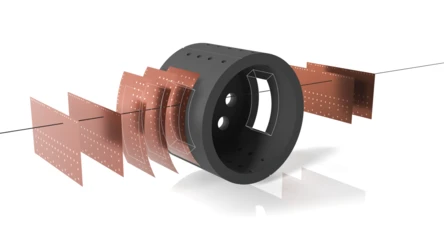Characterization and performance studies with bent ALPIDEs
The upgrade of the ALICE experiments Inner Tracking System (ITS3) aims to replace its innermost detection layers with cylindrically bent wafer-scale CMOS MAPS sensors. The bent geometry, similar to an arch of a bridge, gives the sensor the ability to hold its own weight, which enables it to significantly reduce the material budget of the detector inside its active area. The bending of silicon chips is made possible by thinning them down to a thickness below 50 µm and has been widely demonstrated using mechanical samples. However, a major open question was whether bending affects the detection performance of the sensor in any way. To study this, ALPIDE sensors (the chip of the currently operational ALICE ITS2) were bent to radii of 18, 24, and 30 mm and operated both in the lab and with beams. No degradation of detection efficiency or spatial resolution was observed, giving confidence to the operation of bent MAPS sensors in ITS3.
Furthermore, bent MAPS sensors were also characterized using low-energy protons, which led to large energy depositions inside the pixels. Making use of the cluster size observable driven by the charge diffusion and sharing between neighbouring pixels, it was also studied whether the charge transportation properties inside the pixel are modified by bending, but no effects of bending were observed. Finally, using the data with the low-energy protons, investigations into the alignment procedures of bent detectors were carried out. Here, multiple approaches were tested and the detector was successfully aligned, leading to angular resolutions in the measured elastic scattering events matching the expectations from idealized Geant4 simulations.
Further reading:
